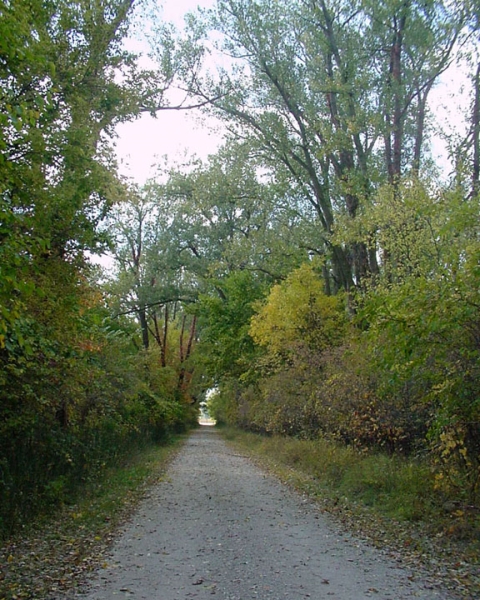What We Do
National wildlife refuges offer us all a chance to unplug from the stresses of daily life and reconnect with our natural surroundings. Located right along the Missouri River, Boyer Chute National Wildlife Refuge provides a number of great opportunities to explore, discover and learn about the plants, wildlife and habitat of the Missouri River floodplain. No matter the season, there is always something visitors can enjoy at Boyer Chute National Wildlife Refuge!
Management and Conservation
Refuges use a wide range of land management tools based on the best science available. Some refuges use prescribed fires to mimic natural fires that would have cleared old vegetation from the land helping native plants regenerate and local wildlife to thrive. Other refuges contain Wilderness areas where land is largely managed in passively. The management tools used are aimed at ensuring a balanced conservation approach where both wildlife and people will benefit. At this field station our conservation toolbox includes:
Wetland Restoration:
The refuge is actively conserving and restoring wetlands for the benefit of wildlife. Wetland management is an important conservation tool that helps the refuge provide a sanctuary and resting place for migratory birds. Staff utilize water control structures and pumps to allow for wetlands to be seasonally flooded. Draw downs and occasional disturbances (like disking or cultipacking) encourage seed germination of important wetland plants which provide nourishment for waterfowl and also benefit a diversity of wildlife throughout the season
Tallgrass Prairie Restoration:
Tallgrass prairie used to cover millions of acres in the Midwest. Today, as little as 1% of the prairie remains. Since the creation of the refuge, thousands of acres of agricultural fields at Boyer Chute National Wildlife Refuge have been returned to native grasslands. Prescribed burning is one of the tools used to maintain the restored tracts of prairie.
River Restoration:
River restoration projects in cooperation with other agencies provide habitat for fish and wildlife along the Missouri River. The restored chute along with Missouri River backwaters area provide important Missouri River floodplain features that have largely been lost due to the heavily channelized and altered condition of the lower Missouri River.
Our Services
National wildlife refuges offer us all a chance to unplug from the stresses of daily life and reconnect with our natural surroundings. Located right along the Missouri River, Boyer Chute National Wildlife Refuge provides a number of great opportunities to explore, discover and learn about the plants, wildlife and habitat of the Missouri River floodplain. The auto tour route and extensive trail network are open year-round and visitors can enjoy activities such as hiking, bird watching, and nature photography. The namesake chute runs alongside the auto tour and multiple parking lots provides access for visitors to observe this Missouri River side channel or to try their luck fishing for common river fish species such as catfish and sauger.
In the spring time, look for morel mushrooms in the open areas of the refuge. These prized edibles can flourish in the Missouri River bottomland habitat.
The refuge also offers hunting opportunities for turkey, white-tailed deer and waterfowl. To learn more about these opportunities or other activities on the refuge contact refuge staff at 712-388-4800.
Our Projects and Research
Our National Wildlife Refuges are places for everyone to learn about and discover the outdoors. This opportunity is utilized by numerous local grad students from local universities and other government organizations over the years, researching parts the wide variety of wildlife and plant species that use or call DeSoto National Wildlife Refuge their home.
Besides just grad student research, Boyer Chute National Wildlife Refuge also utilizes citizen science projects to help improve our understanding of the natural world, enabling us to evaluate our management practices for our wildlife.
Law Enforcement
U.S. Fish and Wildlife Service law enforcement officers have a wide variety of duties and responsibilities. Officers’ help visitors understand and obey wildlife protection laws. They work closely with state and local government offices to enforce federal, state and refuge hunting regulations that protect migratory birds and other game species from illegal take and preserve legitimate hunting opportunities. Some other duties include patrolling closed areas, maintaining relationships with neighboring landowners, maintaining refuge boundaries and participating in public events related to refuge issues.
Laws and Regulations
Laws, acts and establishing authorities provide the basic framework for all management decisions on a national wildlife refuge national wildlife refuge
A national wildlife refuge is typically a contiguous area of land and water managed by the U.S. Fish and Wildlife Service for the conservation and, where appropriate, restoration of fish, wildlife and plant resources and their habitats for the benefit of present and future generations of Americans.
Learn more about national wildlife refuge . At Boyer Chute National Wildlife Refuge, the establishing authority as a place for the development, advancement, management, conservation, and protection of fish and wildlife resources. This also factors in to the public uses that are permitted on the refuge. All public uses must be found compatible with the mission of the refuge. Some uses that are found compatible may require a special use permit to control the numbers and potential impact. The overall goal is to provide the public with a place to enjoy nature and wildlife without impacting the refuges ability to carry out its mission.

